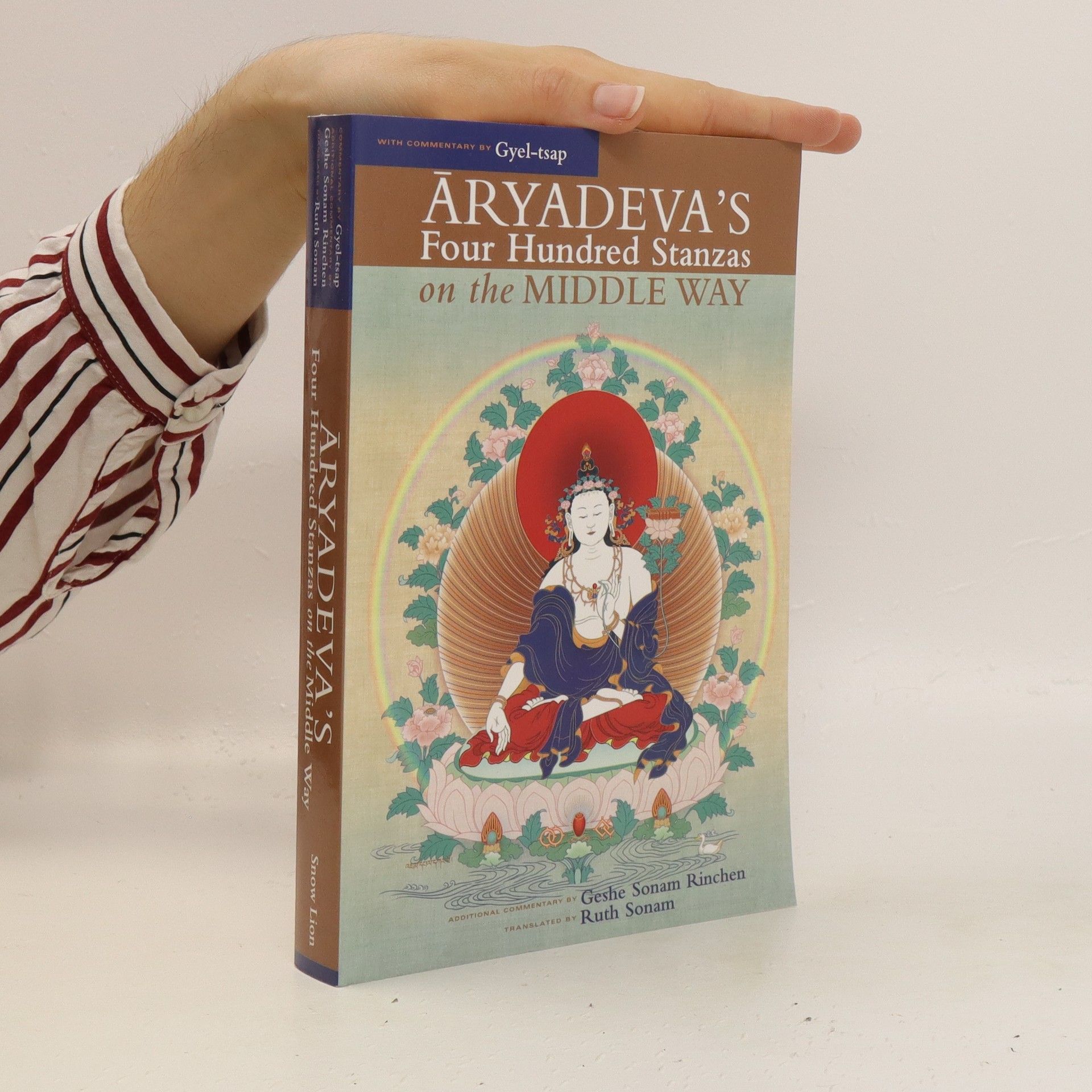Recognizing their true potential and letting go of everything which could hinder them on their spiritual journey, Bodhisattvas entrust themselves to the path taught by the Buddha. Resisting disturbing emotions, they learn to respond to difficult situations in a constructive way. Fully understanding the nature of reality and the illusion-like nature of pleasure and pain, they overcome clinging attachment and aversion. In these ways, Bodhisattvas come to cherish living beings as the source of all happiness and are ultimately able to work solely for the good of all. Gyelsay Togmay Sangpo wrote The Thirty-Seven Practices of Bodhisattvas in the fourteenth century. His succinct and simple verses of advice summarize the quintessence of the Mahayana path to perfection. Geshe Sonam Rinchen's oral teachings elucidate these practices for the modern reader and show how we can transform our actions, feelings, and ways of thinking to become Bodhisattvas ourselves.
Sonam Geshe Rinchen Reihenfolge der Bücher






- 2012
- 2010
The Three Principal Aspects of the Path
- 168 Seiten
- 6 Lesestunden
The wish for freedom, the altruistic intention, and the wisdom realizing emptiness constitute the essence of the Buddhist path. In this teaching, Geshe Sonam Rinchen explains, in clear and readily accessible terms, Je Tsongkhapa’s (1357–1419) famed presentation of these three essential topics.
- 2008
Aryadeva's Four Hundred Stanzas on the Middle Way
- 400 Seiten
- 14 Lesestunden
Gyel-tsap Dar-ma-rin-chen states that Aryadeva's Four Hundred Stanzas was written to explain how, according to Nagarjuna, the practice of the stages of vogic deeds enables those with Mahayana motivation to attain Buddhahood. Both Nagarjuna and Aryadeva urge those who want to understand reality to induce direct experience of ultimate truth through philosophic inquiry and reasoning. Aryadeva's text is more than a commentary on Nagarjuna's Treatise on the Middle Way, because it also explains the extensive paths associated with conventional truths. The Four Hundred Stanzas is one of the fundamental works of Mahayana Buddhist philosophy, and Gyel-tsap's commentary is arguably the most complete and important of the Tibetan commentaries on it
- 2006
How Karma Works
- 160 Seiten
- 6 Lesestunden
We all want to find happiness and be free from suffering. Happiness comes from positive mental states and actions, and suffering from the opposite. The twelve-part process of dependent arising shows how actions underlain by ignorance propel us from one rebirth into another, keeping us trapped in suffering, and how through understanding reality correctly we can break this cycle. The four noble truths, the twelve links of dependent arising, and the two truths regarding conventional and ultimate reality, all interrelated, form the very core of the Buddha's teaching. The many different practices of sutra and tantra become meaningful and purposeful only when they are based on a good understanding of these fundamental and seminal principles. This oral teaching by Geshe Sonam Rinchen is based on the Rice Seedling Sutra and the twenty-sixth chapter of Nagarjuna's Treatise on the Middle Way .
- 2006
Eight Verses For Training The Mind
- 112 Seiten
- 4 Lesestunden
How do we free ourselves from the demon of self-concern? These instructions are found in Eight Verses for Training the Mind , one of the most important texts from a genre of Tibetan spiritual writings known as lojong (literally "mind training"). The root text was written by the eleventh-century meditator Langritangpa. His Holiness the Dalai Lama refers to this work as one of the main sources of his own inspiration and includes it in his daily meditations.
- 2003
This short gem of a book shows how distorted perceptions and disturbing emotions—arising from our misunderstanding of reality—can be completely uprooted, resulting in freedom from suffering.
- 2000
The Bodhisattva Vow
- 240 Seiten
- 9 Lesestunden
The book focuses on the teachings surrounding the Bodhisattva vow, particularly the insights from Chandragomin's Twenty Verses. It covers essential aspects such as the proper recipient of the vow, preparation methods, potential transgressions, and purification processes. Geshe Sonam Rinchen presents these teachings in clear, accessible language, guiding readers on how to take and uphold the Bodhisattva vow effectively.
- 1997
Atisha's Lamp For The Path To Enlightenment
- 215 Seiten
- 8 Lesestunden
Atisha's most celebrated text sets forth the entire Buddhist pathAtisha, the eleventh-century Indian Buddhist scholar and saint, came to Tibet at the invitation of the king of Western Tibet, Lha Lama Yeshe Wo, and his nephew, Jangchub Wo. His coming initiated the period of the second transmission of Buddhism to Tibet, formative for the Sakya Kagyu and Gelug traditions of Tibetan Buddhism.Atisha's most celebrated text, Lamp for the Path to Enlightenment, sets forth the entire Buddhist path within the framework of three levels of motivation on the part of the practitioner. Atisha's text thus became the source of the lamrim tradition, or graduated stages of the path to enlightenment, an approach to spiritual practice incorporated within all schools of Tibetan Buddhism.